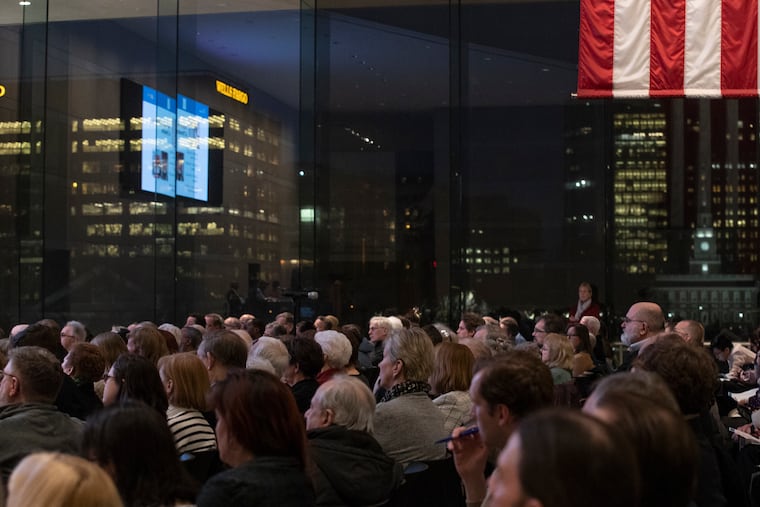Philly History Museum closure deemed ‘a disgrace’ by public, but Drexel is praised for stepping in
The plan would see the university take over stewardship of the vast collection, care for it, put the whole online, and loan it out to venues around town.

Harsh words were directed at the City of Philadelphia on Wednesday evening, at a public meeting called to air plans for Drexel University to assume ownership and control of the collection of the Philadelphia History Museum, which was shuttered in June because of budget cuts.
“Philadelphia deserves a real history museum,” said John Gallery, former head of the Preservation Alliance of Greater Philadelphia. “It’s a disgrace.”
“The museum has never lived up to its potential because it’s been chronically underfunded,” said another man. Its closure, he said, "is a disgrace for the city.”
Even David Brownlee, a University of Pennsylvania professor of art history, who praised Drexel for its “extraordinary public spirit" in working to save and retain the collection in Philadelphia, said the city-Drexel plan was “not enough.”
The city, he said, needs “something that resembles a museum.”
The discussion, which drew about 400 people to the National Constitution Center, sought to lay out plans that called for an evaluation of each item in the vast collection — it is now said to number over 130,000 artifacts, ranging from the wampum belt supposedly given to William Penn by the Lenni-Lenape in 1683 to the sign and restaurant furniture from Little Pete’s restaurant on South 17th Street, closed in 2017.
Drexel has begun an assessment of this unique trove with an eye toward paring the collection to an undetermined but focused size, digitizing it, putting the whole thing online, caring for it, and lending it to venues around the city and region.
Currently, the entire collection resides in a climate-controlled storage facility; nothing is left in the John Haviland-designed museum building on South Seventh Street, the first home of the Franklin Institute.
The university would not open a new museum building, according to Rosalind Remer, Drexel vice provost and director of the Lenfest Center for Cultural Partnerships. But, she said, if a proposal came along for a “sustainable” history museum in the future, the collection could find a home there.
The purpose of the plan “is to prevent the breaking up of the collection.”
Both Remer and David Rasner, president of the Philadelphia History Museum’s board of trustees, said no blanket sales are planned or foreseen. Objects will be evaluated from the perspective of the Philadelphia story. Does the object have some relationship to the city? Does it have an identifiable history? Is it a duplicate? Is it in decent condition?
Remer and historian Page Talbott, who is conducting the evaluation, said a committee of independent experts will look at every item the evaluation identifies as possibly not suitable for the collection, a prelude for divesting, or deaccessioning in museum parlance.
Any deaccessioned items would be offered to area collecting institutions and historical sites free. Only if no one wanted an object would it be sold, they said. All sales proceeds will go back into care of the collection and acquisitions.
The city, museum, and Drexel encourage comments on the plan, which will be posted on the museum website, philadelphiahistory.org. Comments can be made directly on the website after Friday. Those interested have until March 20 to jot their thoughts down.
Another public meeting will be held following the revision of the plan.